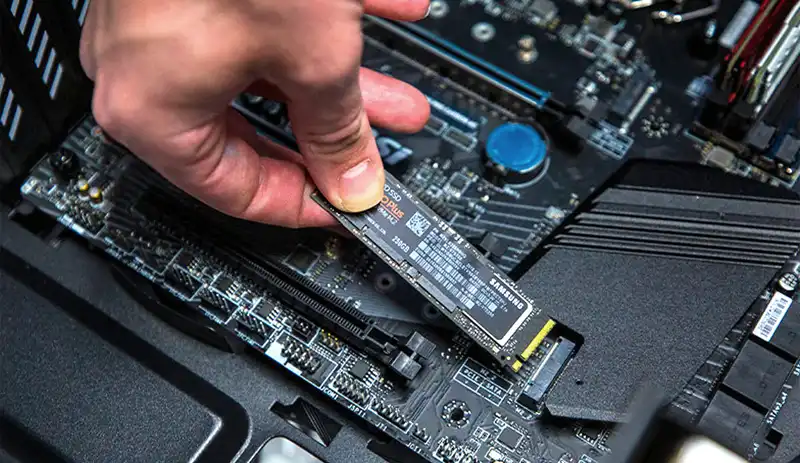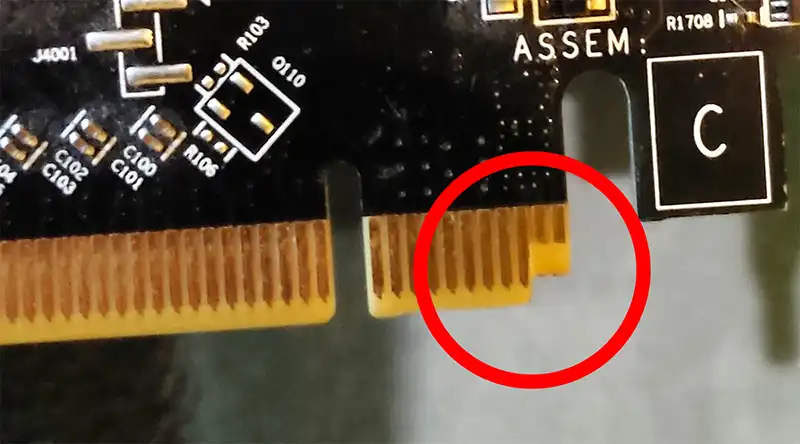You can also be interested in these:
- How to get around the hard drive not installed on Dell laptop error
- How many hard drives can a PC have
- What SSD are compatible with PS5 and how to install
- ASUS ProArt Z790-CREATOR WIFI motherboard review
There are various reasons why your motherboard may not recognize the M.2 SSD. Don’t worry, there is a solution. We will provide you with information about the most common reasons and detailed step-by-step solutions to resolve the issue.

Reasons and solutions
If you have acquired a new M.2 SSD and the motherboard does not recognize it, it could be due to several reasons. If it is a used M.2 SSD, check if it is damaged by mounting it on another computer or an external adapter. Now, if the M.2 SSD is new, we will analyze the possible causes and applicable solutions for each situation.
Motherboard to M.2 SSD compatibility
Not all units and motherboards are compatible with each other. That’s why one of the reasons why the motherboard may not recognize the M.2 SSD could be due to an incompatibility in the connection or in the SSD’s format.
Therefore, it is best to check the motherboard manual (can be downloaded from the manufacturer’s website or from the brand of the equipment) and verify that the M.2 SSD meets the specifications. If it is not compatible, return the unit and exchange it for a compatible one or change the motherboard, if necessary.
The following are some of the reasons why an M.2 SSD unit could be incompatible:
- Shape or size: in some unusual cases, the M.2 SSD unit may not fit in the available space. For example, if the board only accepts units of size 2242 and you have a size 2280 unit with 80mm length instead of the supported 42mm, it may be difficult to properly install the unit.
- Incompatible interface: it is important to verify that the M.2 interface is compatible with the unit, as M.2 is only a format that can be SATA or NVMe PCIe.
- PCIe version: the PCIe version is not an issue, as a PCIe 4.0 unit will work in a PCIe 5.0 slot at the speed of version 4.0.
- Firmware: in some cases, the version of the BIOS/UEFI firmware may be causing the M.2 SSD recognition issue. You may need to update the firmware, but keep in mind that this involves certain risks and you should do it at your own risk. Additionally, there is not always a newer version available.
These are the most common brands to update the firmware:
- Asus – Support link
- Gigabyte – Support link
- ASRock – Support link
- MSI – Support link
Incorrect installation
Make sure the M.2 SSD unit is properly installed. Although the installation is simple, there may be a problem if this is the first time you are installing an M.2 SSD unit. Some common problems include:
- Not inserting the unit into the correct slot.
- Not inserting the unit correctly, which can cause connection issues.
- The slot is dirty, which prevents a good connection.
- Not properly securing the unit to the motherboard, which can cause the unit to move.
If everything is in order, go ahead and check the following areas.
Defective M.2 slot
Some motherboards have a damaged M.2 slot, either due to a broken contact or faulty soldering. If you insert the M.2 SSD into a damaged slot, there will not be a proper connection and the device will not be detected. As a result, it will not work.
The solution to this problem is unfortunately expensive, whether you need to take your motherboard to a technician to repair or replace the slot or replace the motherboard altogether.
Additionally, it is possible to read the manual for your motherboard as sometimes there are slots that look similar and are not intended for M.2 SSDs, and in some cases the motherboard’s RAID controller requires devices to be connected in a specific order. This could be one of the reasons why your motherboard is not recognizing the M.2 SSD.
Problems with the PCIe controller or chipset
Another potential problem is a defective chipset or PCIe controller on your motherboard. For example, there could be a voltage issue or some other problem with these chips. In this case, you can check the BIOS/UEFI to see if it has voltage options for these devices and increase it a bit to resolve the issue.
The M.2 SSD unit has been detected in the BIOS/UEFI, but the operating system does not recognize it
The issue may not be physical and simply due to the fact that the unit has not been formatted and assigned a file system and partitions. In Windows, this is easy to fix. Here’s how:
- Open the Windows Disk Manager.
- Check that the M.2 SSD unit appears in the list of connected devices.
- Right-click on the unassigned unit and select “New simple volume…” or a similar option.
- Follow the steps presented to assign a drive letter, space, partitions, and format.
- After the process is complete, click Finish and you will now have access to your SSD unit and be able to use it.
In the case where you are unable to format the M.2 SSD unit through the operating system, an option is to download a GParted Live and use it from a bootable device such as a USB memory to start the tool and format the unit.
What happens if nothing of the above works and the motherboard still does not recognize the M.2 SSD?

If you have not been able to resolve the issue with the previous methods, then it is possible that the M.2 SSD unit is defective or damaged. It could be a new unit with manufacturing defects, or a refurbished or used unit in poor condition. The solution in this case is to replace the unit with one that works properly.
Although there is S.M.A.R.T. software to monitor the condition of the SSD unit, it will not be helpful if it is not recognized by the hardware or operating system. Additionally, if the M.2 SSD unit is severely damaged, it will also prevent a diagnosis from being performed.
More stories like this
- How to get around the hard drive not installed on Dell laptop error
- How many hard drives can a PC have
- What SSD are compatible with PS5 and how to install
- ASUS ProArt Z790-CREATOR WIFI motherboard review
- ASRock B365M IB-R (Pro4) motherboard review
- Intel B660 vs Z690, which is worth your investment?